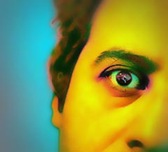When Anxiety Strikes?
 For Mrs. Suman (not her real name) living life normally, is not at all easy. She is in a constant state of worry and is unable to relax. Even a small little thing can keep her occupied for days. She is always imagining things worse than they really are, If it is a simple headache, she’d think it to be a cancerous tumor or something terrible and this terrible feeling of ?what’s going to happen next? can really kill her. When it comes to meeting someone new, traveling, or going to a party, Mrs. Suman gets sleepless nights and has to plan for days before she can do it. She suffers from an anxiety disorder called ?Generalized Anxiety Disorder?.
For Mrs. Suman (not her real name) living life normally, is not at all easy. She is in a constant state of worry and is unable to relax. Even a small little thing can keep her occupied for days. She is always imagining things worse than they really are, If it is a simple headache, she’d think it to be a cancerous tumor or something terrible and this terrible feeling of ?what’s going to happen next? can really kill her. When it comes to meeting someone new, traveling, or going to a party, Mrs. Suman gets sleepless nights and has to plan for days before she can do it. She suffers from an anxiety disorder called ?Generalized Anxiety Disorder?.Generalized anxiety disorder (GAD) is much more than the normal anxiety people experience day to day. It’s chronic and fills one’s day with exaggerated worry and tension, even though there is little or nothing to provoke it. Having this disorder means always anticipating disaster, often worrying excessively about health, money, family, or work. Sometimes, though, the source of the worry is hard to pinpoint. Simply the thought of getting through the day provokes anxiety.
People with GAD can’t seem to shake their concerns, even though they usually realize that their anxiety is more intense than the situation warrants. Their worries are accompanied by physical symptoms, especially fatigue, headaches, muscle tension, muscle aches, difficulty swallowing, trembling, twitching, irritability, sweating, and hot flashes. People with GAD may feel lightheaded or out of breath. They also may feel nauseated or have to go to the bathroom frequently
Anxiety is just like the crisis management group set in our country, which is supposed to respond during an emergency condition. In fact, what happens during anxiety in our body, is for good. It is supposed to prepare us for what the body perceives as danger and threat, but when it gets triggered too often by situations that are not potential threats, it is called anxiety disorder. For example in a given situation where we are faced with a man-eating leopard, each one of us would respond with fear and would do something to neutralize the threat like move away from the it ,if it cannot be overpowered. But if one were to respond in a similar situation on seeing just a a photograph of a leopard, it surely would be called as an anxiety disorder.
Homeopathy & Anxiety Disorder
Anxiety disorder is a real illness and can be treated very effectively using homeopathic medicines. Here is a detail of some homeopathic medicines, which would help you in finding the correct one for you. The triple A’s- (Aconite, Arsenic, Argentum) lead the homeopathic table in treating anxiety disorder.
Aconite napelus
One of the best homeopathic bets in treating acute anxiety attacks. Aconite is used in Cases where symptoms come up suddenly and with great intensity .Great fear of death along with symptoms of acute anxiety is characteristic for the use of aconite.
Argentum nitricum
Chronic cases of anxiety disorders are best treated with it. Argentum nitricum is most indicated when the patient has characteristic symptoms of hurry-worry.
In cases where Argentum is needed, anticipation is responsible for many symptoms of
Anxiety e.g. palpitations, trembling of hands, frequent urge to pass urine or stool when meeting someone new or going for any important meeting etc. examination funk- condition usually found in students where develop a strong fear develops before examination, is also well treated with argentum nitricum
Arsenic album
Mental restlessness is a marked indication for the use of arsenic album. It is also helpful sleeplessness in chronic anxiety patients.
Dr.Anwar Hossain
DHMS Dhaka. Mss.Economices. RU01711466710














